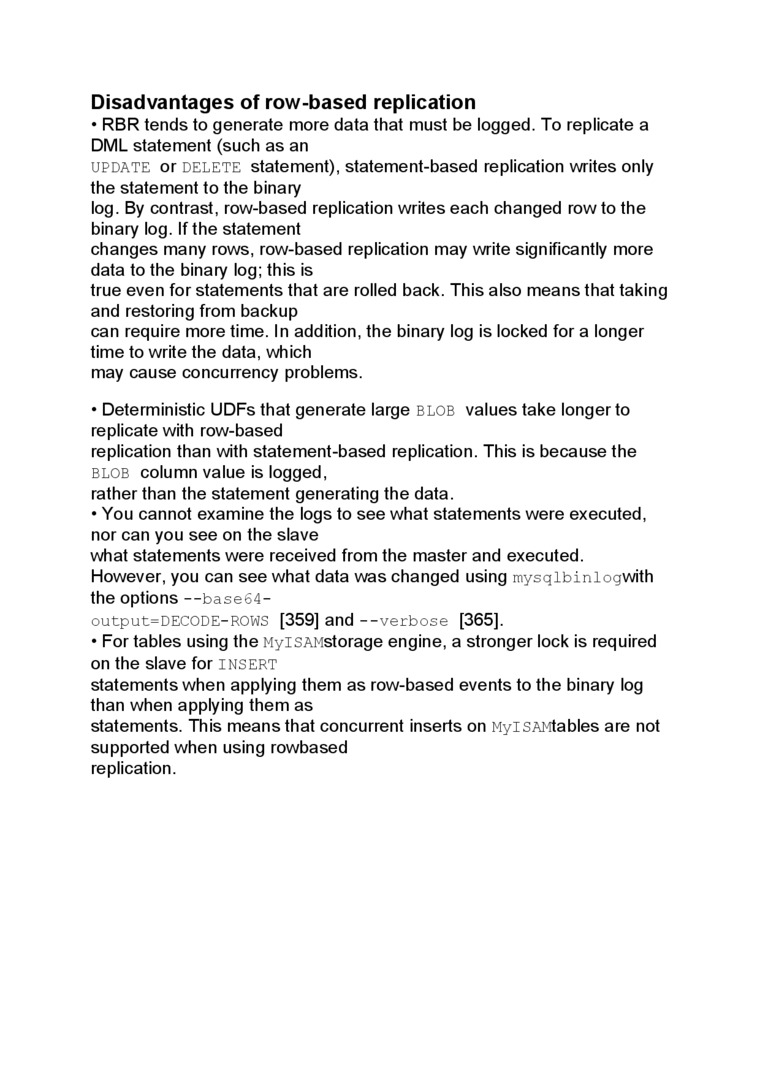89320

Disadvantages of row-based replication
• RBR łends to generate morę data that must be logged. To replicate a DML statement (such as an
UPDATE or DELETE statement), statement-based replication writes only the statement to the binary
log. By contrast, row-based replication writes each changed rowto the binary log. If the statement
changes many rows, row-based replication may write significantly morę data to the binary log; this is
true even for statements that are rolled back. This also means that taking and restoring from backup
can require morę time. In addition, the binary log is locked for a longer
time to write the data, which
may cause concurrency problems.
• Deterministic UDFs that generate large blob values take longer to replicate with row-based
replication than with statement-based replication. This is because the
blob column value is logged,
rather than the statement generating the data.
• You cannot examine the logs to see what statements were executed, nor can you see on the slave
what statements were received from the master and executed.
However, you can see what data was changed using mysąlbinlogwith the options —base64-
output=DECODE-ROWS [359] and--verbose [365].
• For tables using the MylSAMstorage engine, a stronger lock is required on the slave for insert
statements when applying them as row-based events to the binary log than when applying them as
statements. This means that concurrent inserts on MylSAMtabies are not
supported when using rowbased
replication.
Wyszukiwarka
Podobne podstrony:
ms 029 S./Lgr. T W. UATCH, of Rushden, Northants, is one of thc happiest men a!ivc, for to-day heca
Rys103 The neutral performance models of the part is then subjected to various manufacturing analy
08unx01 we, the people of the United States, in order to form a morę per-fect Union, establish justi
08unx04 We. tbc pcoplc of the IJnilcd States, in order to form a morę perfect Union. cstaMisłi jusli
08unx13 We. the people of the United States, in order to form a morę perfect Union, establish justic
08unx16 Preamble We, the people of the United States, in order to form a morę perfect Union. establi
08unx20 Preamble We. the pcoplc of tbc United States. in order to form a morę perfect Union, establi
08unx24 Prcamblc We. thc pcoplc of thc United States, in order to form a morę pcrfect Uaioo. citabli
IMGx46 264 The Origin of Civilisation upwards on the ciuilisation gradient, and its unique status mu
Błock Parameters: Sine Wave 2 Sine Wave (mask) (link) Output samples cf a sinusoid. To generate morę
więcej podobnych podstron